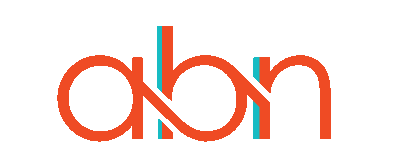If you are looking to simplify your daily business workflow, it’s important to do it without constraining yourself or your resources. Below are some steps you can take to maximize both your performance and efficiency.
Visualize the Entire Process
As strange as it may sound, visualizing the entire workflow process makes it easy for you to better understand how things work around you. It also helps you visualize who is performing what task and then you can easily evaluate the most important items to tackle. This can help you break down a big project into smaller, more manageable pieces.
Additionally, visualizing the process allows you to identify any bottlenecks or potential obstacles before they become issues, enabling you to proactively adjust your approach. By seeing the workflow from start to finish, you gain a clearer perspective on how each part contributes to the whole, making it easier to maintain momentum and keep everything on track. Over time, this practice not only improves efficiency but also builds confidence in managing complex tasks.
Multitasking Does Not Always Help
While multitasking may seem like an efficient way to tackle multiple tasks at once, it can sometime prove to be more of a hindrance than a help. Multitasking does not have to be the sole solution to every workflow problem. While it might work for some, it can lead to decreased focus and increased errors for others. Instead of trying to juggle several tasks at once, direct your energy toward the most important items on your to-do list.
When you concentrate on one task at a time, you not only enhance your ability to produce high-quality work, but you also reduce the mental fatigue that comes from constantly switching gears. Research shows that our brains are not wired to handle multiple tasks simultaneously; rather, they thrive on focused attention. By prioritizing and dedicating your full attention to each task, you can streamline your workflow and improve your overall productivity. Embracing single-tasking allows you to fully engage with your work, leading to greater satisfaction and better results.
Plan Ahead
One of the most common pitfalls in daily workflow is diving into tasks without a clear, structured plan. Taking time at the beginning of each day (or the evening before) to outline your priorities and map out a realistic timeline can significantly improve your focus and efficiency. A well-thought-out plan serves as a roadmap, guiding you through your day and helping you stay on track, even when unexpected tasks arise. By setting specific goals and knowing the steps needed to achieve them, you avoid the chaos of last-minute decisions.
Implement Proper Documentation Procedures
While it may seem old-fashioned in today’s digital age, maintaining thorough documentation of your daily tasks and processes is essential for a streamlined workflow. Proper documentation allows you to track what has been done, monitor progress, and identify areas for improvement. It also serves as a valuable reference, providing clarify and consistency when similar tasks or projects arise in the future.
By developing a habit of documenting completed tasks, important notes, and key learnings, you create a reliable resource that not only aids in personal accountability but also enables smoother delegation and collaboration. This proactive approach to documentation can save time, reduce errors, and improve overall efficiency, making it easier to revisit and refine your workflow over time.
Learn to Prioritize
To simplify your workflow and enhance your performance, mastering the art of prioritization is essential. Start by identifying the tasks that demand your immediate attention and placing them at the top of your list. This means focusing on high-impact activities that align with your goals, followed by tasks of lesser urgency. By addressing the most critical items first, you create a more streamlined workflow that enables you to maintain focus on the bigger picture.
Prioritization not only helps you allocate your time and energy effectively, but it also minimizes the feeling of being overwhelmed. When you have a clear hierarchy of tasks, it’s easier to make informed decisions about where to direct your efforts each day. Consider using tools like the Eisenhower Matrix, which categorizes tasks based on urgency and importance, to help you visualize and sort your priorities.
Additionally, remember that priorities can shift. Regularly reassessing your to-do list allows you to stay adaptable in a dynamic work environment. By consistently focusing on what truly matters, you can enhance your productivity and achieve your goals with greater clarity and confidence.
Takeaway
In conclusion, productivity doesn’t always correlate with the amount of time and resources you invest; it also reflects how effectively you manage your workflow. This is where simplifying your processes becomes invaluable. By incorporating the tips discussed—visualizing your workflow, recognizing the limitations of multitasking, learning to prioritize, and implementing proper documentation—you can streamline your routine and significantly improve your chances of completing tasks successfully.
As you plan for your next workday, take a moment to integrate these strategies. By continually refining your approach, you’ll create a more efficient and focused work environment that fosters both productivity and satisfaction. Embrace these changes and discover how a simplified workflow can lead to remarkable improvements in your performance.

